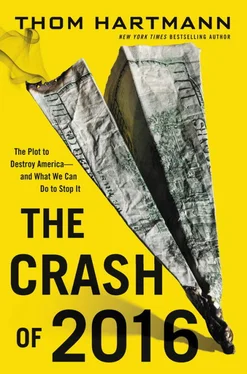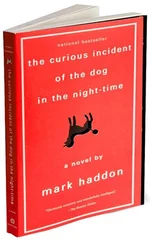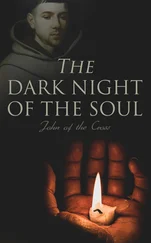There are still sprawling middle-class neighborhoods across America like the one Joe Stack lived in. But what we can’t see is the debt financing, the credit card bills piling up, and the kitchen-table conversations over how the utility bill will be paid that month.
There are still students across America attending colleges, preparing for their jobs in the future. But what we can’t see is the massive $1 trillion student-loan bubble handcuffing them to lenders for the rest of their life. Things all look the same on the surface, but just below, the substrate is deteriorating.
We’re all ducks like Joe Stack desperately paddling to stay afloat. And day by day more and more of us are sinking.
Joe Stack thought he was doing what needed to be done. As he wrote in his suicide letter, “I can only hope that the numbers quickly get too big to be white washed and ignored and that the American zombies wake up and revolt. It will take nothing less.”
Norman Rousseau and his wife did everything they were supposed to do. They were responsible homeowners who did business with Wachovia and Wells Fargo (which acquired Wachovia) and put a 30 percent down payment on a home in California back in 2000, and they made every payment from then on, never missing even one single month. 7
But in 2007, the bank began to exhibit its psychopathic nature. According to a complaint filed by the Rousseaus, the bank approached them about changing their mortgage to an adjustable-rate mortgage. The Rousseaus stressed they were interested only in a fixed-rate loan and that they wanted to pay the same payments throughout the life of the loan.
But they trusted the bank—which was a big mistake. So when Wells Fargo told them that the “new industry standard” is adjustable-rate mortgages, that they could save more than $600 a month in mortgage payments, and that the “worst-case scenario” would be an increase of only a few dollars on their monthly payments, the Rousseaus gave in to the salespeople and took the new mortgage.
But a few years later, in 2009, the Rousseaus knew they were stuck with a bad deal. Their new interest rate was higher than it was before 2007, and even higher than what they were told it could increase to. But as responsible homeowners who had done everything they were supposed to do, the Rousseaus still made each and every monthly payment on time.
That’s when, judging from the Rousseaus’ complaint, Wells Fargo’s psychopathy took flight. In May of that year, the bank claimed that the Rousseaus had missed a monthly payment. The Rousseaus said that was impossible, that they had made the payment, and even gave proof that they had made the payment at the bank with a cashier’s check that had been cashed by the bank.
But the bank still claimed it never received the payment, and over the next few months the bank repeatedly claimed that the Rousseaus had missed payments, hitting them with a barrage of demands for monies owed including additional fee after fee and penalty after penalty. Every time the Rousseaus thought they had finally convinced the bank that it was wrong, the cycle of abuse would begin again.
During the next few years, this sort of back-and-forth, double-talk, Kafkaesque nightmare continued between Wells Fargo and Norman Rousseau. The fees kept piling up, as did the lies from the bank—and then the eviction notices came rolling in.
By 2012, the financial burden of the whole ordeal had become unbearable, and the Rousseaus—like so many other Americans in the middle of the housing meltdown—were getting wiped out by the increased mortgage payments. That’s when Wells Fargo finished them off, setting the eviction date of May 15 for when Norman Rousseau and his wife had to be out of their house.
But two days before the scheduled eviction, Norman Rousseau, apparently unable to bear losing his home after the bank had already taken all his money, pulled out a gun and killed himself. He was one of the first victims of the Great Crash.
So, too, was James Richard Verone.
Verone knew something was wrong when he noticed a strange protrusion in his chest.
He was already dealing with arthritis and carpal tunnel syndrome, only now the pain was too unbearable to handle. Unfortunately, James couldn’t see a doctor because he didn’t have health insurance after he was laid off as a delivery driver for Coca-Cola—a job he’d held for seventeen years.
With the economy in recession, James could only find work as a convenience clerk, but that job didn’t offer any medical benefits. And eventually, as the pain grew and grew, James found himself unable to work. That’s when the social safety net that has been under attack for thirty years by the Economic Royalists failed him: He was denied any sort of disability benefits by the federal government.
James was dying and had no options in the United States of America—the wealthiest nation on the planet.
No way to get health care… except for one.
In June 2011, James woke up, took a shower, ironed his shirt, and jumped in a taxicab headed for his local RBC bank. He walked inside, slipped the teller a note, and then walked over to a bench in the bank, where he waited, anxiously pawing at his long lock of gray hair and mangy beard.
The note read that he was robbing the bank of one dollar. James knew that the only way he could receive the sort of medical attention he needed was in prison, so he committed the smallest crime he could think of and waited for the cops to arrest him.
He was charged with bank robbery, and exactly according to plan, James was thrown in jail, where he was given the chance of seeing a doctor and received the basic health care that he was unable to receive as a free man.
As James said about his decision to choose jail over freedom, “If you don’t have your health, you don’t have anything.” 8It’s another story that will be common during the Crash of 2016.
In the past, diseases such as tuberculosis and malaria have been number one health concerns around the world.
But not anymore.
In today’s world, globalization is the number one health risk facing humanity.
A study recently released by the Blacksmith Institute reveals, for the first time ever, the impact of industrial pollutants on communities across the planet. It found that industrial-waste dump sites containing toxic horrors such as lead, mercury, and chromium poison more than 125 million people in forty-nine different low- and middle-income nations around the planet.
The authors of the study say this is a very conservative estimate and that likely even more people are sickened by this rampant industrial pollution. In fact, the report says, industrial pollution is now a bigger global health problem for the world than malaria and tuberculosis.
Richard Fuller, the president of the Blacksmith Institute, warned that it’s only going to get worse. “Life-threatening pollution will likely increase as the global economy exerts an ever-increasing pressure on industry to meet growing demands,” he said. “The damage will be greatest in many low- and middle-income countries, where industrial-pollution-prevention regulations and measures have not kept pace.” 9
But it’s not just the developing world that’s being poisoned—it’s the United States, too.
In 2012, Chris Hedges warned Bill Moyers, “It’s absolutely imperative that we begin to understand what unfettered, unregulated capitalism does, the violence of that system.”
In his book Days of Destruction, Days of Revolt , Hedges documents what he calls “sacrifice zones.” He defines them as “areas that have been destroyed for quarterly profit. And we’re talking about environmentally destroyed, communities destroyed, human beings destroyed, families destroyed.” 10
Читать дальше












